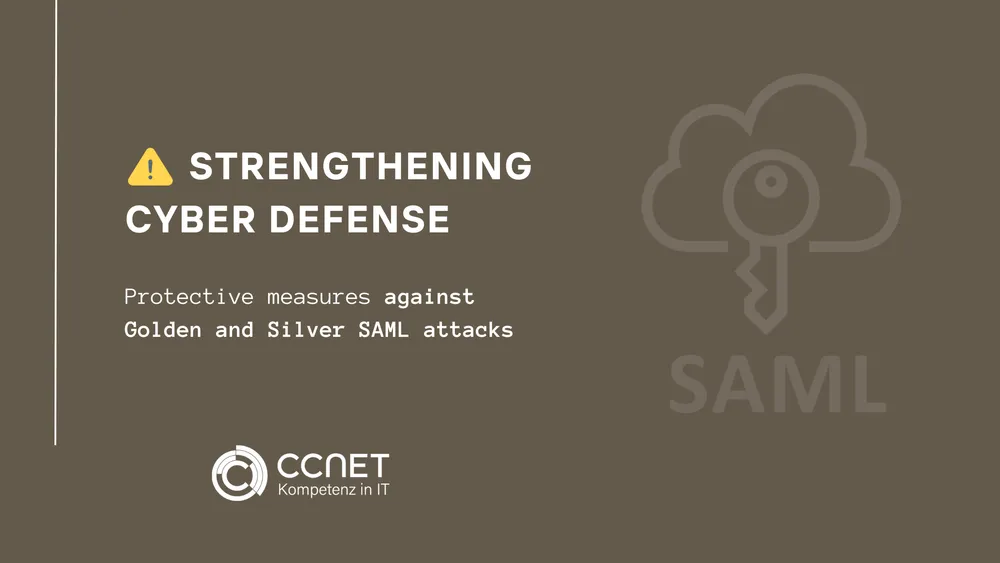
CCNet
Nov 3, 2025 • 3 min read

Cyber Situation 2025: From Reacting to Acting Proactively
Management Summary
The current cyber situation in 2025 is clear: reactive, “best-effort” approaches are failing due to the speed and professionalism of attackers. Damage is caused not only by intrusion, but above all by downtime, restarting, and loss of trust. Those who fail to establish robust standards, time targets, and escalation paths today will pay twice – first in the incident, then in the recovery. The way out is unromantic but effective: prioritization according to business value, strict service levels for patching and detection, automated incident response, and a clear, well-rehearsed crisis procedure.
Why reactive action is twice as expensive
Pure tool procurement without architecture leads to silos, blind spots, and costly hand-offs. Attackers exploit precisely these friction losses – for example, through phishing, misuse of old accounts, exploitation of unpatched vulnerabilities, or the introduction of malicious code via third-party systems. The result: longer mean time to detect/recover, higher contractual penalties, more rework in forensics and communication. Added to this are indirect costs that CFOs often underestimate: delivery delays, lost revenue, and the departure of critical employees. The remedies are well known, but too rarely implemented with discipline: prioritized vulnerability management, binding change windows, end-to-end telemetry, and a playbook that doesn't gather dust in a drawer.
Three levers for immediate resilience
1) Reduces complexity, increases reliability.
The benchmark is not “more tools,” but better coverage with less friction. Consolidate overlaps, define clean interfaces, and establish exit scenarios in case a provider fails. This reduces effort, improves signal quality, and shortens response time.
2) Focus on identities.
Perimeters are porous; identities are the new control point. Zero Trust means “verify rather than trust” – for people, services, and devices. In practical terms, this means phishing-proof MFA, just-in-time privileges, hardening of legacy protocols, rotation of keys/tokens, and consistent monitoring of service accounts.
3) Practice, automate, measure.
Without practice, every playbook remains theory. Establish biannual crisis simulations, including authority and communication paths. Automate standard responses (containment, isolation, ticketing) to free up analysts for value-adding analysis. Define clear goals: How quickly is a critical alert confirmed? How quickly is the first containment step live? Which systems are operational again within hours?
KPIs for executives and IT management
- MTTD/MTTR: Time to detection/resolution – not as a fair-weather average, but per criticality layer.
- Patch SLOs: Critical gaps with internet exposure within days, internal gaps within defined weekly deadlines.
- Coverage: Coverage rate of central log sources, endpoint coverage, test rate of recovery procedures.
- Identity hygiene: Proportion of privileged sessions with JIT approval, rate of orphaned accounts, rotation cycles for secrets.
- Business fit: Percentage of business processes with documented workarounds and tested recovery plans.
These metrics are only useful if they are addressed at regular intervals. Reporting without consequences is not worthwhile. Budget decisions should be based on goals: less alarm noise, shorter recovery times, higher process stability.
Measures that have an immediate effect
- Modernize email protection and awareness: Combine technical checks (authentication, anomalies) with realistic training that goes deeper than “don't click.” Phishing remains the number one starting point—winning here prevents many cascading consequences.
- Hardening & patching: Incorporate risk classes and fixed time targets. Critical Internet systems are given priority. Vulnerability management requires responsible persons, calendars, and enforcement.
- Standardized incident response**: A real 24/7 process, not just a document. Roles, checklists, approvals – including decoupling steps (e.g., emergency login, out-of-band communication).
- Check the supply chain: Minimum requirements: questionnaires, evidence, ad hoc tests for critical changes. No flying blind when it comes to third-party access or updates.
- Targeted budget management: A higher security budget is not an end in itself. Funds should be allocated primarily to transparency (telemetry), identity (MFA/JIT), and automation (SOAR workflows).
Conclusion: Set the framework now
The threat situation is not getting any easier, but it is becoming more manageable – when governance, technology, and practice work together. Those who take a proactive approach today will reduce the amount of damage tomorrow. Start small, but with commitment: a 90-day program with clear goals, weekly reviews, and visible quick wins. This also includes honest discussion about cyber risk at the management level: What downtime is acceptable? Which processes have priority? Which emergency bridges must function? Those who answer these questions—and test them regularly—will establish true resilience instead of false security.
Further information can be found here: generative ai models
FAQ on Cyberlage 2025
What is the core flaw in many security programs?
Activity without target architecture and KPIs – budget is wasted, risk remains.
What three building blocks belong in every security strategy?
Target architecture, measurable operational goals (MTTD/MTTR, patch SLOs), and exit plans for core providers.
How do I make progress visible?
Quarterly steering with 5–7 hard KPIs; deviations trigger actions, not slides.
Do I need new tools first?
No. First use cases, data path, roles/playbooks; then targeted purchasing.
What is the fastest “no-regret” step?
Phishing-proof MFA for critical roles + disable legacy authentication.


